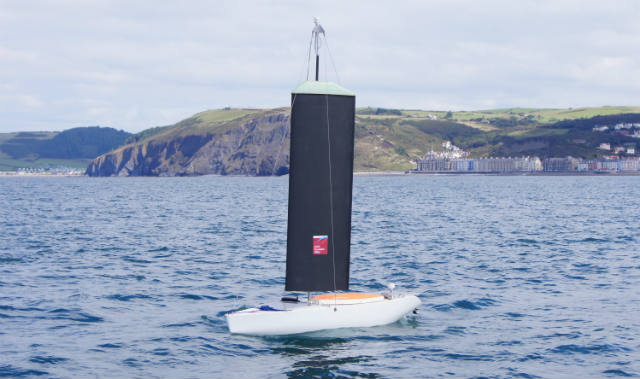Cassidian's pursuit of new technologies suitable for use with unmanned air systems has branched out to cover more efficient energy management and data relay techniques.
Work on the programmes - respectively named Tethys and Dazzle - stems from investments likely to be worth more than a combined £3 million ($4.8 million), says Gary Clayton, Cassidian's UK research and technology manager.
Tethys, a roughly two-year research effort with funding of £600,000, seeks to develop an intelligent power management system which should deliver a more than 30% efficiency improvement.
"We are looking at the endocrine and hormone model of the human body, so we can direct power only where and when it is needed," Clayton says. About half-way complete, the process has moved from mathematical modelling performed with the University of Aberystwyth to live demonstrations using a 3.6m (12ft)-long unmanned boat, operated in Cardigan Bay off the west Wales coast.
 |
|---|
Cassidian |
"The technology on the boat will prove that the modelling results and real-life experimental data have a correlation," says Clayton, who describes some of the early work as "really encouraging". There are currently no plans to fly the system on a UAV, but Cassidian believes it could be used on types such as EADS's hand-launched Tracker (below), as well as future all-electric, high-altitude platforms.
| |
|---|
Cassidian |
About £2.5 million - from the EADS Foundation Wales initiative between the company, the Welsh government and the University of Cardiff - has been allocated to Dazzle. This is researching the potential use of optical lasers to relay surveillance information, potentially removing the need for UAVs to carry some heavy and power-consuming communications equipment.
Also involving the University of Glamorgan, the effort is looking into the feasibility of an unmanned platform carrying six or seven modulating retro reflectors.
These would add information to a laser beam transmitted from the ground before returning it in modified form. A transfer rate of 10Mb/s should soon be demonstrated from a range of 1.3nm (2.5km) under favourable environmental conditions, and Clayton believes a 100Mb/s rate - sufficient for multiple video channels - could be achieved later in the programme.
Beam-tracking issues are one of the challenges facing such a concept, but he notes that Cassidian and its partners have identified a "very promising solution", which remains at the pre-patent phase. "There are an enormous number of times when this sort of technology would be useful," he adds.
Investment in fuel cell technology is also ongoing, with some flight testing having been performed earlier this year using a Tracker in France. Further work will be conducted later this year, and Cassidian believes the advance could deliver an up to 10-times improvement over current batteries within three to five years.
Source: Flight International


























